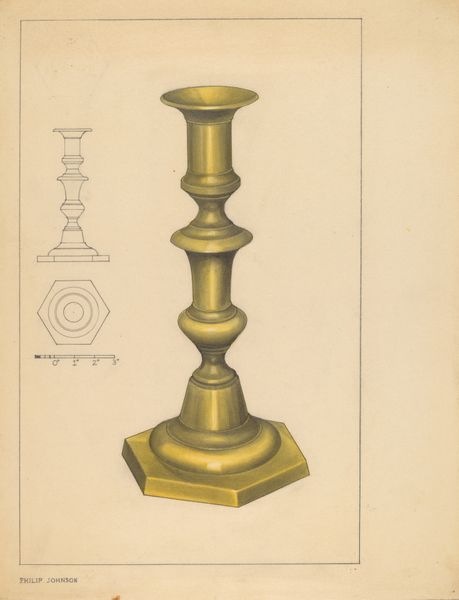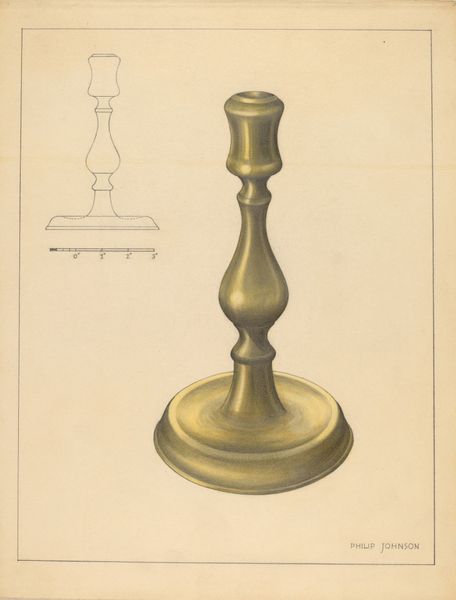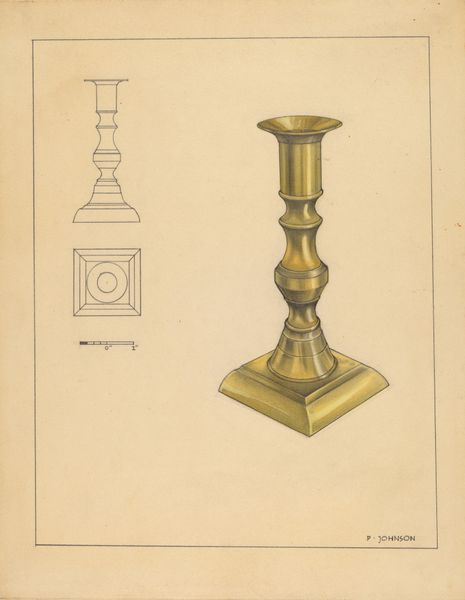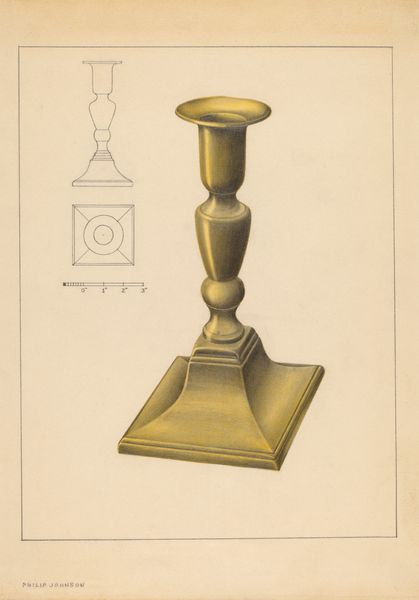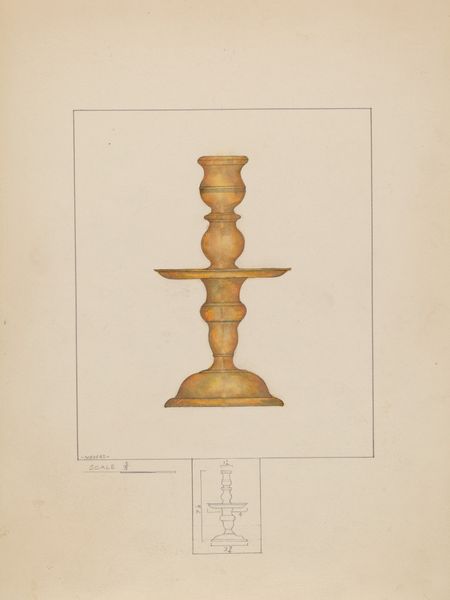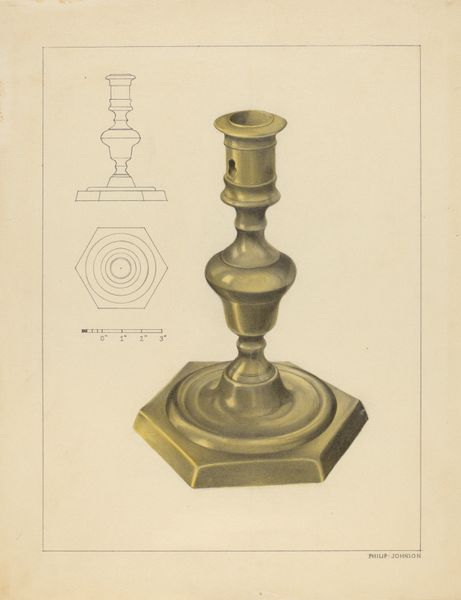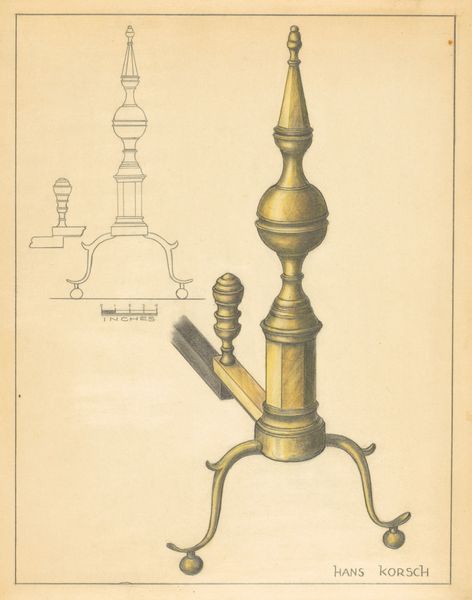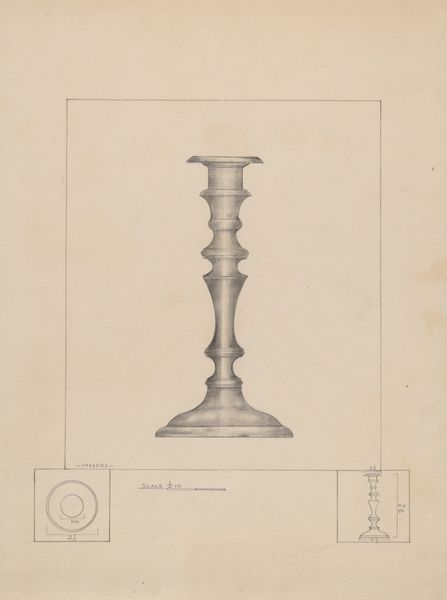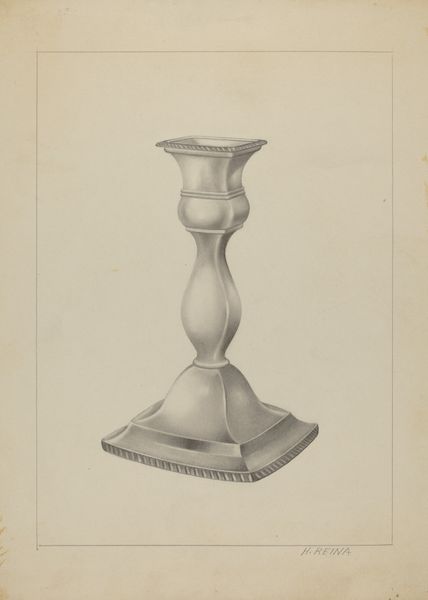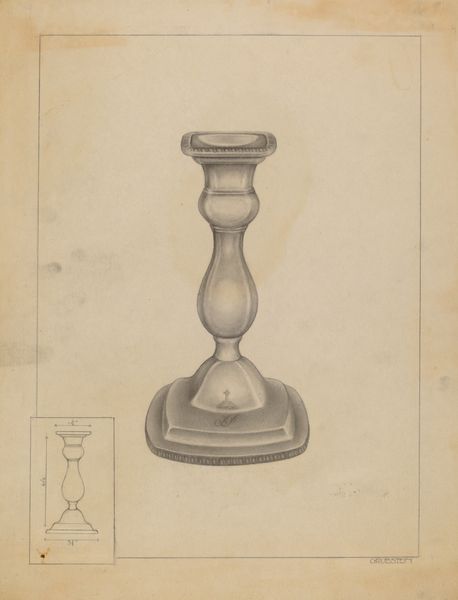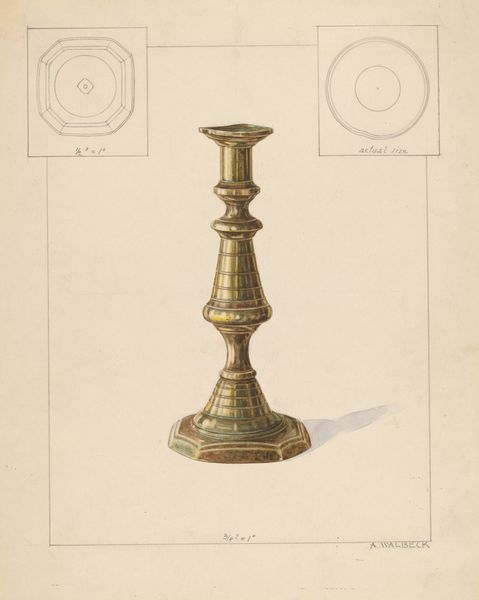
drawing, pencil, graphite
#
drawing
#
pencil
#
graphite
Dimensions: overall: 30.1 x 23 cm (11 7/8 x 9 1/16 in.) Original IAD Object: 8" high
Copyright: National Gallery of Art: CC0 1.0
Curator: This drawing, entitled "Candlestick," was rendered circa 1936 by Jack Staloff, using graphite and pencil. It's a beautiful example of precision. Editor: It really is! At first glance, I find the golden color wash evokes a sense of warmth and tradition. The way light seems to reflect off the candlestick’s curves feels almost inviting. Curator: It’s intriguing how Staloff combined a realistic rendering with technical drawing conventions. Notice the diagrammatic view to the left, showing cross-sections and measurements. That's typical for design work. We often forget drawings such as these were necessary precursors for actual production. Editor: Yes, absolutely. Candlesticks throughout history, especially in pre-electricity times, symbolized light in darkness, hope, and even spiritual enlightenment. Curator: And that light required the production of candles themselves. Consider the raw materials, often beeswax or tallow, and the labour involved in their making. The candlestick itself facilitated the distribution of light—its form designed for practical use and for displaying social status. Editor: Looking closely, the candlestick’s form reminds me of a stylized pillar or perhaps even a miniature ziggurat, reaching upward. This architectural quality elevates the object. Did Staloff understand, do you think, the rich lineage of light-bearing objects through history? Curator: His intentions are hard to definitively know, but this image itself operates at the intersection of art, design, and industry. It speaks volumes about the artist's role, whether in creating functional objects or illuminating their cultural significance through art. Editor: Well, whether design document or devotional object, it’s fascinating how a simple candlestick drawing can evoke such rich layers of interpretation. Curator: Indeed, Jack Staloff’s "Candlestick" reminds us to examine both the artistry and industry behind even the most mundane objects that we use daily.
Comments
No comments
Be the first to comment and join the conversation on the ultimate creative platform.
